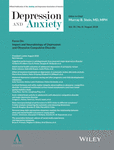Personal sleep debt and daytime sleepiness mediate the relationship between sleep and mental health outcomes in young adults
Abstract
Background
Sleep duration and chronotype (i.e., morningness–eveningness) are associated with increased depression and anxiety risk, but differences in individual sleep need and lifestyle may mean these sleep parameters do not present the same risk across all individuals. This study explored the mediating role of sleep debt and daytime sleepiness in the relationship between sleep and mental health symptoms in young adults, a particularly vulnerable population.
Methods
Young adult university students (n = 2,218) and young adults from the general population in the United States (n = 992) provided estimates of actual and optimal sleep duration, and completed validated measures of sleepiness, chronotype, and depression and anxiety risk. Mediation models examining sleepiness and sleep debt (i.e., difference between optimal and actual sleep) as parallel mediators were tested.
Results
Sleepiness and sleep debt mediated the relationship between short sleep and depression and anxiety risk in the university sample, while sleepiness mediated these relationships in the general population sample. Sleepiness and sleep debt also mediated the impact of evening-type preferences on depression and anxiety risk in university students, but no mediation of this effect was found in young adults from the general population.
Conclusions
This study reports potential mediating mechanisms related to the increased mental health risk conferred by short sleep and evening chronotype. These results have implications for how primary care physicians assess psychopathology risk, arguing for a focus on the assessment of daytime sleepiness and sleep debt in university populations, while for young adults in the general population, these factors may be less important.
CONFLICT OF INTEREST
D.L.D. and A.P.W. report no conflicts of interest. S.P.A.D. reports that he is the current President of the Sleep Research Society. S.M.W.R. reports that he has served as a consultant through his institution to Philips Respironics, EdanSafe, National Transport Commission, Vanda Pharmaceuticals, Rail, Bus and Train Union, Tontine Group, Australian Workers’ Union, Transport Accident Commission, Meda Consumer Healthcare, New South Wales Department of Education and Communities, and has through his institution received grants from Philips Respironics and Vanda Pharmaceuticals and reimbursements for conference travel expenses from Vanda Pharmaceuticals. He currently serves as a consult to, and is a Program Leader for, the Cooperative Research Centre for Alertness, Safety and Productivity. His institution has received equipment donations or other support from Compumedics, Philips Lighting, Optalert and Tyco Healthcare. He is a former President of the Australasian Sleep Association and is a Director of the Sleep Health Foundation. He has also served as an expert witness and/or consultant to shift work organizations.




